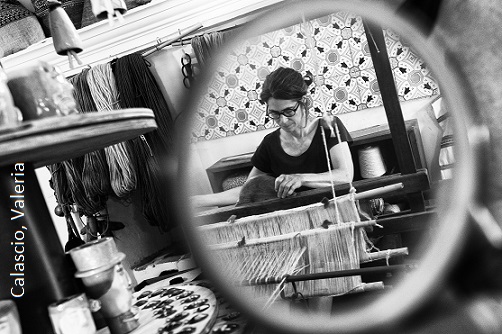A Portrait of the Artist as a Woman on the Threshold: Patterns of Liminality and Communitas in Giovanna Capone’s In My Neighborhood
DOI:
https://doi.org/10.54103/2035-7680/20063Parole chiave:
Liminality; Communitas; Italian American; Turner; EspositoAbstract
This contribution carries out a spatial analysis of the short stories and poems collected in Giovanna Capone’s In My Neighborhood (2014), with a twofold aim: exploring the significance of physical and metaphorical liminalities in the development of Capone’s poetics and, on a more theoretical level, outlining an alternative paradigm, based on the concepts of liminality and communitas, to read Capone’s poetry, as well as other contemporary Italian-American literary texts. I identify four sites of liminality in Capone’s work and delve into their relationship with the narrative voice and the role they play in its evolution. This essay reflects on Giovanna Capone’s Bildung and her identity as a queer Italian-American author by re-reading the four spaces described in In My Neighborhood through the lens of Victor Turner’s theory of liminality and Roberto Esposito’s notion of communitas. Esposito’s development of the concept allows for an alternative interpretation of the community of Italian American queer subjectivities created by Capone in the Southwest. Finally, the connection of such community with Gloria Anzaldúa’s formulation of Borderland and ‘mestiza consciousness’ is highlighted as a theoretical counternarrative to the identification of the ethnic queer self as a member of a community defined by borders.
Metriche
Riferimenti bibliografici
Bona, Mary Jo. Claiming a Tradition. Italian American Women Writers. Southern Illinois University Press, 1999.
Capone, Giovanna. In My Neighborhood. Bedazzled Ink, 2014.
Connell, William J., and Stanislao G. Pugliese, editors. The Routledge History of Italian Americans. Routledge, 2018.
Davidson, Catherine N., and Jessamyn Hatcher, editors. No More Separate Spheres! A Next Wave American Studies Reader. Duke University Press, 2002.
Esposito, Roberto. Communitas, the Origin and Destiny of a Community. Translated by Timothy Campbell. Stanford University Press, 2010 [1998].
---. “Community, Immunity, Biopolitics.” Translated by Zakiya Hanafi. Angelaki, vol. 18, no. 3, 2003, pp. 83-90.
Giunta, Edvige. “Persephone’s Daughters.” Women’s Studies: An Interdisciplinary Journal, vol. 33, no. 6, 2004, pp. 767-787.
---. Writing with an Accent. Contemporary Italian American Women Authors. Palgrave Macmillan, 2002.
Giunta, Edvige, and Louise De Salvo, editors. The Milk of Almonds: Italian American Women Writers on Food and Culture. Feminist Press, 2002.
Izzo, Donatella. “Italian American Studies: territori, percorsi, proposte.” Ácoma vol. 13, 2017, pp. 9-28.
Hayes, Elizabeth T., editor. Images of Persephone: feminist readings in Western literature. University Press of Florida, 1994.
Moraga, Cherrie, and Gloria Anzaldúa, editors. This Bridge Called My Back: Writings by Radical Women of Color. Kitchen Table Press, 1983.
Pratt, Mary Louise, “Arts of the Contact Zone.” Profession, 1991, pp. 33-40.
Ruberto, Laura. “Cultural Studies and the Intermittence of Ethnicity in Italian Diaspora Studies”. RSA, vol. 30, 2019, pp. 116-120.
Thomassen, Bjørn. Liminality and the Modern. Living Through the In-Between. Ashgate, 2014.
Tomasulo, Victoria. “Persephone’s Descent. Place, Race, and Diasporic Self-Fashioning in The Skin Between Us.” JAm It! (Journal of American Studies in Italy) no. 4, 2020, pp. 83-106.
Turner, Victor W. The Ritual Process: Structure and Anti-Structure. Cornell University Press, 1991 [1969].
---. From Ritual to Theatre: The Human Seriousness of Play. Performing Arts Journal Publications, 1982.
Verdicchio, Pasquale. “The Preclusion of Postcolonial Discourse in Southern Italy.” Revisioning Italy. National Identity and Global Culture, edited by Beverly Allen and Mary Russo, University of Minnesota Press, 1997, pp. 191-212.
Dowloads
Pubblicato
Come citare
Fascicolo
Sezione
Licenza

Questo lavoro è fornito con la licenza Creative Commons Attribuzione - Condividi allo stesso modo 4.0.




